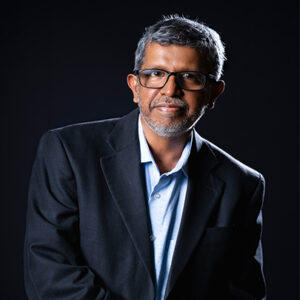Understanding the Power of Root Cause Analysis: Enhancing Business Performance and Customer Satisfaction
Introduction
In the ever-evolving landscape of business and industry, organizations continually face challenges that threaten their growth, efficiency, and reputation. From manufacturing defects and service disruptions to safety incidents and quality lapses, these problems can have far-reaching consequences if left unaddressed. Root cause analysis (RCA) emerges as a powerful tool to tackle these issues, enabling organizations to identify the underlying reasons behind problems and implement effective solutions. By understanding and mastering RCA, businesses can transform their problem-solving capabilities, enhance performance, and ensure long-term success.
Importance of RCA
Root cause analysis offers numerous benefits to organizations in various industries. It not only plays a vital role in preventing repetitive problems, improving processes, and enhancing quality, safety, and efficiency but also drives overall organizational success. Being a cost-effective tool, it goes beyond the temporary fix and addresses the underlying drivers of problems, ensuring long-term solutions, making data-driven decisions, fostering continuous improvement, and promoting a culture of learning and growth, finally resulting in increased operational efficiency and enhanced customer satisfaction.
In this blog, let’s delve into key techniques of root cause analysis, and understand why it should be an integral part of the problem-solving approach.
1. CAPA: Corrective and Preventive Action
Corrective and Preventive Action is an essential part of the root cause analysis process. CAPA is a set of actions taken in a systematic way to eliminate the causes of non-conformities or other undesirable incidents, such as deviations, complaints, or failures. This approach encompasses a detailed investigation of the problem, identification of root causes, and the development of appropriate corrective and preventive actions. CAPA involves a series of steps, including problem identification, containment actions, determination of the root cause, and implementation of corrective and preventive measures. It aims to address the immediate issue and prevent its recurrence, ensuring long-term quality and process improvement.
2. 5 WHYs: A simple yet powerful technique
One of the most commonly used and popular techniques in RCA is the 5 Whys methodology. Developed by Sakichi Toyoda, the founder of Toyota Industries, this technique involves repeatedly asking “Why?” to reach the root cause of a problem. This technique involves accurately stating the problem, and then asking “why” five times to drill down to the core reason followed by identifying the potential solutions based on the root cause. By continuously digging deeper into the causes of an issue, we can uncover the underlying factors that led to its occurrence.
3. RCA: Other techniques
Apart from the 5 Whys technique, various other types of root cause analysis techniques can be employed based on the complexity and nature of the problem.
- Fishbone (Ishikawa) Diagram: This technique is a visual tool that identifies potential causes grouped under various categories, helping to narrow down the root cause. It helps identify different categories of causes, such as people, machines, materials, methods, and measurements, and their interrelationships, promoting a comprehensive understanding of the problem.
- Fault Tree Analysis (FTA): FTA is a top-down analytical tool used to identify the potential failure modes and their root causes. This deductive approach identifies the root cause by breaking down a problem into its possible causes and logical relationships.
- Failure Modes and Effects Analysis (FMEA): FMEA is a structured technique used to identify potential failure modes in a system, assess their consequences, and prioritize them based on severity, occurrence, and detection. This technique focuses on preventing failures before they happen, making it a valuable tool for proactive problem-solving.
- Pareto Analysis: This analysis method prioritizes problems based on their frequency or impact, allowing organizations to focus on the most significant issues.
- SWOT Analysis: This is a commonly used tool to assess an organization’s strengths, weaknesses, opportunities, and threats to identify potential root causes.
4. Cause and Effect Relationship
Regardless of the technique used, the underlying principle of root cause analysis is cause and effect relationship. This concept suggests that there is a direct relationship between an event or action (cause) and its outcome (effect). Understanding this relationship enables us to determine the primary causes behind a problem and implement appropriate corrective and preventive actions to address them. The cause-and-effect analysis involves mapping out the cause-and-effect relationships using tools like flowcharts or cause-and-effect diagrams to visually represent the factors contributing to the issue.
Conclusion
At Vinyas, we follow various root cause analysis techniques as an indispensable tool for identifying and resolving issues effectively as well as preventing the recurrence of problems or incidents. By employing techniques such as CAPA, 5 WHYs, FTA, or FMEA, and various root cause analysis methods, we have been able to systematically uncover the root causes of issues, leading to effective corrective and preventive actions. Understanding cause-and-effect relationships has further enhanced the RCA process, leading to improved quality, safety, and overall performance. With root cause analysis as a cornerstone of problem-solving, Vinyas ensures continuous improvement and maintains high levels of quality and efficiency.




